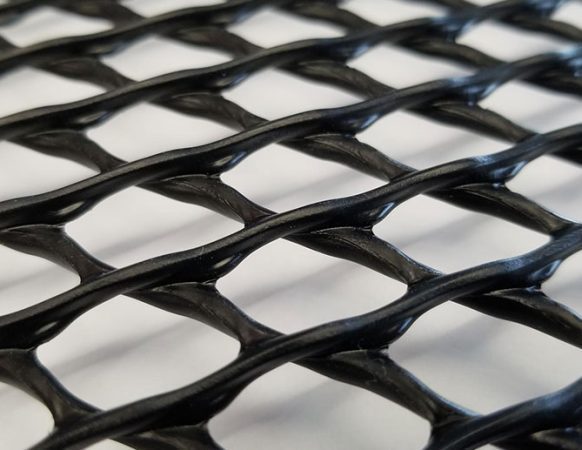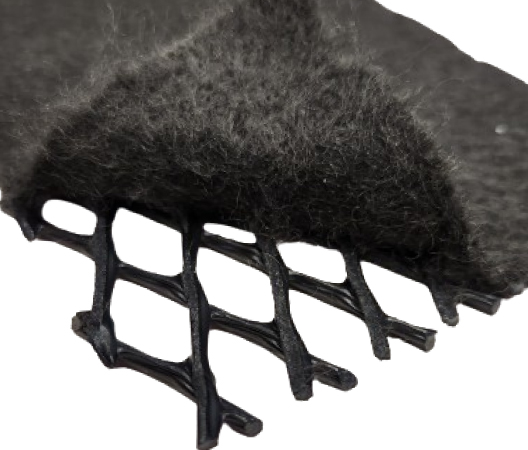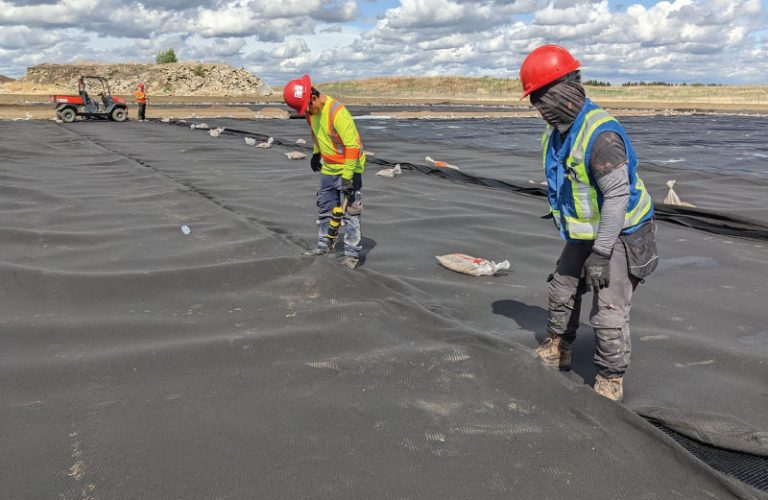Providing lateral transmission of Fluids and gasses
Layfield’s HydraNet™ is a cost-effective and environmentally conscious alternative to aggregate drains for various applications. HydraNet™ can effectively transmit fluids and gasses while taking up much less space compared to a sand, stone, or gravel layer. In double-lined containment applications, HydraNet™ is commonly used to create an interstitial space between two geomembrane liners as part of a leak detection system.
HydraNet™ geocomposites have a geotextile bonded to one or both sides of a geonet. The addition of laminated geotextile layers prevents the movement of soil fines into the drainage path that could otherwise lead to clogging and reduced drainage performance longer term. This geonet is manufactured in North America at our ISO 9001-certified facility.
Why Is Hydranet Unique?
Offers several advantages over traditional drainage systems
These advantages include improved hydraulic performance, increased resistance to clogging, and reduced installation time and costs.
Used in various geotechnical applications
Applications include landfill liners and caps, road and railway construction, slope stabilization, and drainage systems.
Manufactured in our North American Facility
Layfield’s HydraNet™ geonet is made in North America at our ISO 9001-certified facility.
Additional Features
- High flow under substantial loads
- Equivalent to about 12″ (300 mm) of aggregate
- Ideal for drainage on slopes

Biplanar Geonets
Biplanar geonets are synthetic materials used in geotechnical engineering applications. They are manufactured with two layers of ribs oriented at an angle, allowing for improved drainage capacity.

Biplanar Geocomposites
Biplanar geocomposites are comprised of a non-woven needle-punched geotextile laminated on either one or both sides of the geonet to prevent soil particles from clogging the drainage core.

Triplanar geonets
The primary difference between the biplanar and triplanar geonets is the flow capacity and higher compressive resistance. Triplanar geonets are made with two sets of parallel ribs separated by a central rib layer. This structure allows for channelized flow and higher drainage performance. The central ribs are designed to offer higher compressive strengths in challenging applications.

Triplanar geocomposites
The 3 layer configuration prevents geotextile protrusion into the drainage core in a triplanar geocomposite, supporting a long-term drainage design solution.
Product Details
Hydranet™ can effectively transmit fluids and gasses while taking up much less space compared to a sand, stone, or gravel layer.
Downloads
Product Specifications
Resources
Explore the resources available to help you acquire additional knowledge on our products. If you cannot find what you are looking for, we are here to help.
Advanced Geosynthetics for Landfill and Waste Applications
Join Layfield Geosynthetics Rohit Sati, Technical Services Manager — Containment and Enclosure Systems, and Brian Fraser, Vice President – Strategic Business Development, for an educational webinar outlining new industry innovations with geomembranes and geocomposites in waste containment applications. This webinar features the following topics: New Bi-Modal Heatgard® HDPE Geomembranes, HydraNet™ Geocomposite Drainage Products, Geovolt® Conductive Composite for Electrical Leak Detection, and GeoFlex® Geomembranes.
